[full_width][/full_width]
Click here for more information on Troy Defense pistols or rifles: https://troydefense.com/portfolio/troy-m7a1-rifles/
Buy a Troy Defense rifle at Guns America: https://www.gunsamerica.com/Search.aspx?T=troy%20defense
Buy some ZQI ammunition for your guns: https://zqiammo.com/
The P7A1 Pistol
Troy Defense and Troy Industries are companies most of us are familiar with. Known for their high-end AR-15 components and military-grade rifles, they have been a headliner in the accessory market from their start. Beyond components, they make a mean rifle. Now they’re moving into the AR pistol market. This gives an new option for those who want the compact firepower offered by Troy’s SBR line, only without the buttstock and without the paperwork.
Built with the same parts as their M7A1 PDW line of short-barreled rifles, these pistols are tanks designed for hard use. For Troy fans, this is a long-awaited launch. We’ve spent a month with the P7A1 pistol and I’m here to tell you first-hand that this gun has all of the effectiveness and capability of the short-barreled rifle models without the NFA hassle.
Features
- Model: TROY P7A1
- Caliber: 5.56 NATO/.223 Remington
- Weight: 5.3 pounds
- Length: 23.9 inches
- Lower receiver: forged with ambidextrous selector markings
- Upper receiver: M4A4 forged flattop
- Finish: MIL-A-8625 Type III Class 2
- Trigger pull: 5 pounds
- Barrel: 7.5 inches with a 1-in-7 twist
- Handguard: 7.2-inch Troy M-Lok rail
- Pistol Grip: Troy BattleAx Control Grip
- Sights: Troy Folding BattleSights
Design
The P7A1 pistol is built with MIL-SPEC components. The receivers are a forged M4A4 set. The polymer trigger guard is oversized to accommodate gloved hands. The pistol grip is textured and has a small compartment for carrying batteries or other small pieces of kit. The iron sights fold and are adjustable — they also lock into the up position, making them suitable for primary use. The buffer tube is plain, while the receiver plate has three quick-detach mounts. Lastly, the handguard is slim and short while still offering and impressive 21 M-Lok slots.
[one_half]
[/one_half][one_half_last]
[/one_half_last]
On the inside, the bolt carrier is a standard M4 design with a properly-staked gas key. The fire control group is made to military standards and tuned to break at 5 pounds. The upper receiver and barrel have M4 feed ramps. The P7A1 pistol has a 7.5-inch barrel and a staked low profile gas block. At the end of the barrel, the gun is topped off with a Troy Industries Claymore muzzle break.
How Does It Shoot?
There is something special about the P7. The combination of the short length, light weight, crisp trigger and above-average ergonomics make for a superior shooting experience. The P7A1 pistol doesn’t let you down when it comes time to pull the trigger. The safety rotates into fire with ease and the two-stage trigger breaks crisply right at 5 Lbs.
The Claymore muzzle brake keeps the sound heading down range and helps to control recoil. It also fires a huge fireball which is always awesome. I’m going to admit my bias here; I prefer an SBR to a pistol. I’m the proud owner of a Troy M7 SBR. That said, I found myself taken back by how smooth this pistol runs. Even without a brace or a stock, the gun is easy to control.
Handling
You may have picked up on the fact that Troy hasn’t partnered with any of the arm brace makers. That’s no accident. Those devices are functional, but highly controversial. And when they’re used as actual arm braces (in the ATF opined legal fashion), they can be cumbersome. Running the gun without a brace does require a bit of technique. I chose to shoot this gun utilizing sling tension to create stability. I was best able to keep the gun tight to my body and on target while shooting by running a 2-point sling. The sling does a great job of stabilizing the gun and is more or less necessary if you intend to shoot this gun with any type of precision. If you want to shoulder this thing do your self a favor and fill out a form one and get this thing SBR’d.
Accuracy
I’ve always preached that stiff barrels breed better accuracy. And lets just say it doesn’t get much stiffer than a 7.5inch heavy barrel. This gun is a pistol and it doesn’t require bench rest testing. Practical tests of the P7A1’s abilities seem more appropriate, but I still took the gun out to 50 meters and did a few groups using ZQI M855/SS109 5.56 ammunition.
[full_width]
[/full_width]
All groups were within the 3.5 inch range, and (discounting a flyer here and there) they were closer to 2.5 inches. Shooting from prone, I could get the groups a bit tighter. My best was a 1.6 inch group. Still, if you can produce 3.5 inch groups with an AR pistol with no stock and no brace–just a two-point sling and an EOTech, then the gun is beyond the old “combat-accurate” cliche.
Conclusion
I’m a fan of the Troy Defense P7A1 pistol. After shooting a case of ZQI M855/SS109 5.56 ammunition, the gun proved to be perfectly reliable. In my opinion, the P7 is a much needed addition to the Troy’s line-up and, in a lot of ways, out does many of the AR pistols on the market. Keeping true to its PDW roots, these guns make great tools and even better range guns for the weekend warrior. The choice of whether or not to buy a P7A1 over other AR pistols really comes down to your needs. This is a gun designed without compromise, designed to work as a pistol or to be upgraded to a SBR. It is exactly what you’d expect from Troy.
[one_half]
[/one_half][one_half_last]
[/one_half_last]
[one_half]
[/one_half][one_half_last]
[/one_half_last]

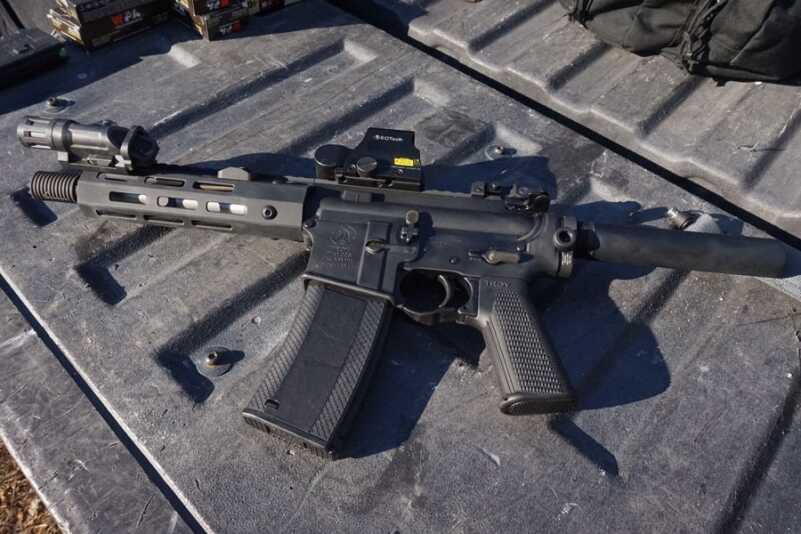
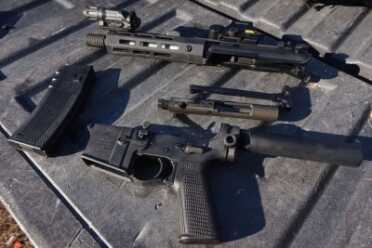

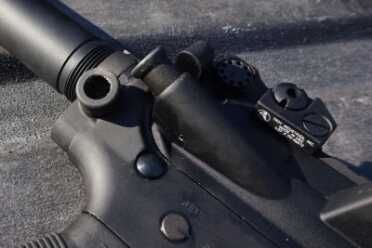
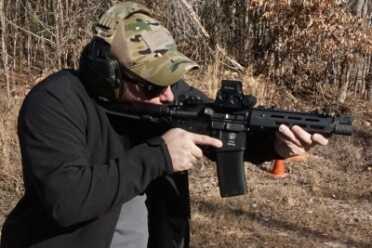
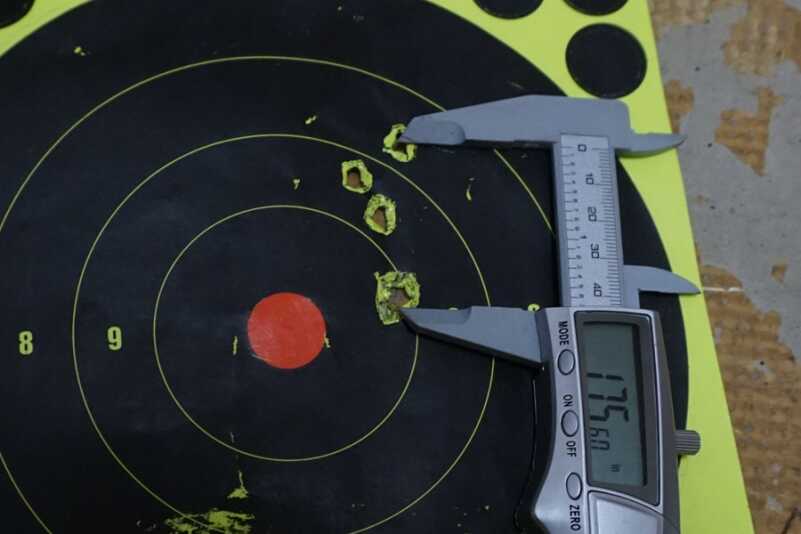
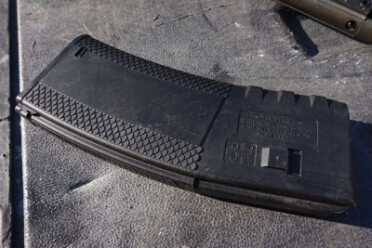
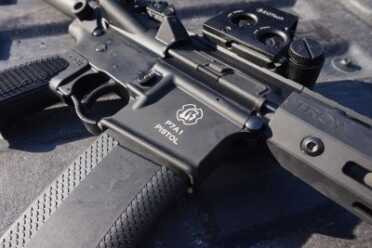
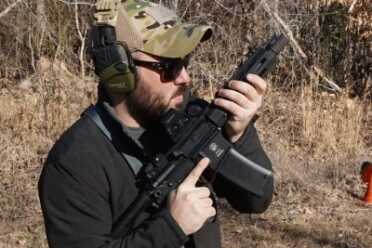
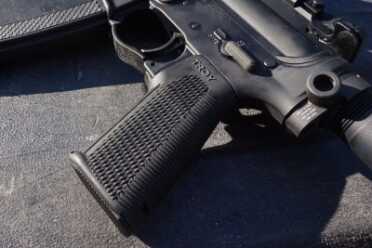
no price?!?!
While the quality of the troy pistol isnt in question, the ballistics of the round it fires is. Especially with such a short barrel. It tends to lessen the super cavitation effect the round needs to do its job. This is my personal opinion but i prefer my Zastava 7.62×39 m92 PAP for that reason. While its heavy compaired to the Troy, it can deliver passed 100 yards with reliability when requested. My real world experience confirmed this for me, when some friends and i decided to go shooting. A friend brought some old computer hard drives to blast. We set some up at about 125 yards. The interesting thing was that the ball ammo they where using out of their AR 15 variants (full length), in many cases failed to penetrate the thin outer metal shell of the hard drives. Its just a case of too light a bullet and too little speed. I know that on soft targets it will still do the job, however for me it turned me off from the whole pistol AR platform all together.
Yup. Hasn’t this kind of been settled? Shorter than a 10.5″ barrel and you lose all the benefit of the 5.56 round because it just isn’t going fast enough (the big fireball is your best clue–that means the gas wasn’t burned in the barrel behind the bullet, so it didn’t help accelerate it.) Power of a round is bullet mass X bullet speed. The 5.56 round is tiny, about half the mass of a 9mm pistol round, so it has to be going FAST in order to get decent power out of it. Just look at the subsonic .300 blackout rounds–they’re 220g, twice the weight of the standard .300 round–huge and heavy, precisely because when you slow it down to subsonic, the only way to compensate and get enough power is to have a heavier bullet. Barrel length is what gives your bullet speed–the longer it’s in the barrel, the longer it accelerates, the faster it goes. 10.5″ is the minimum for 5.56.